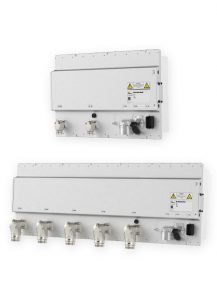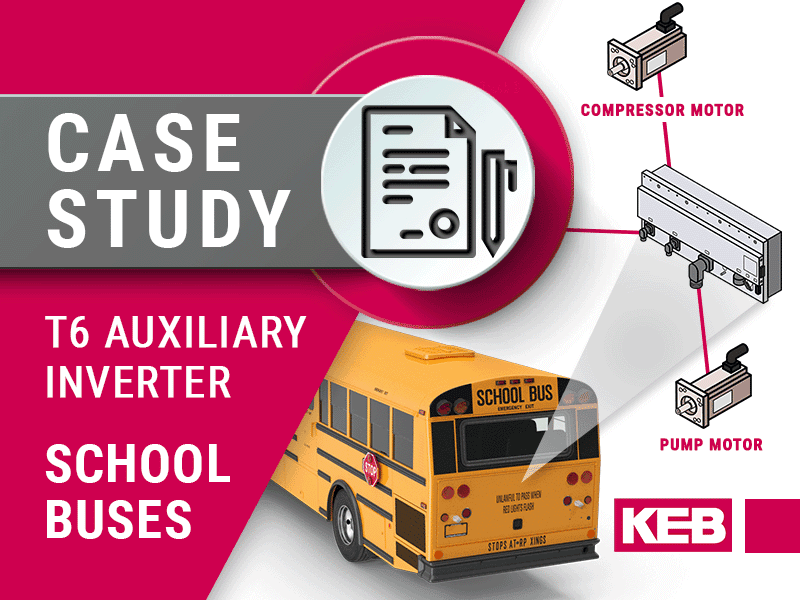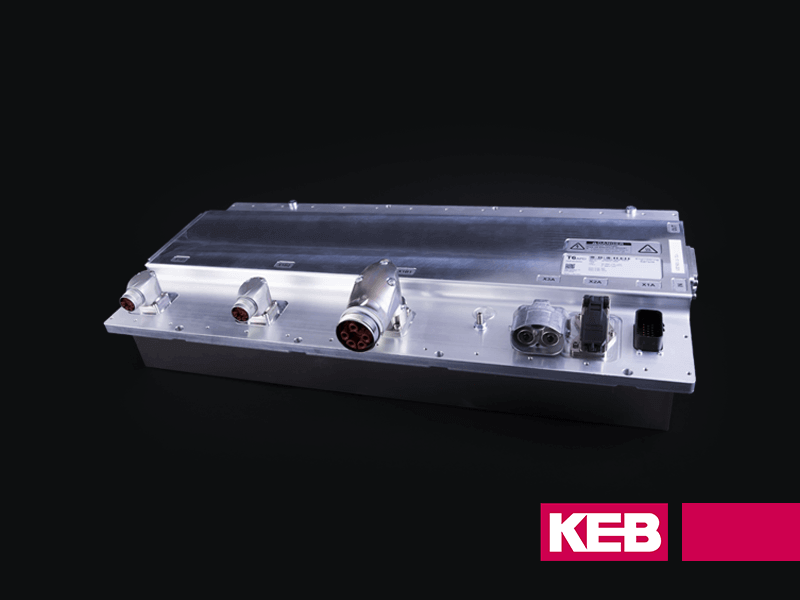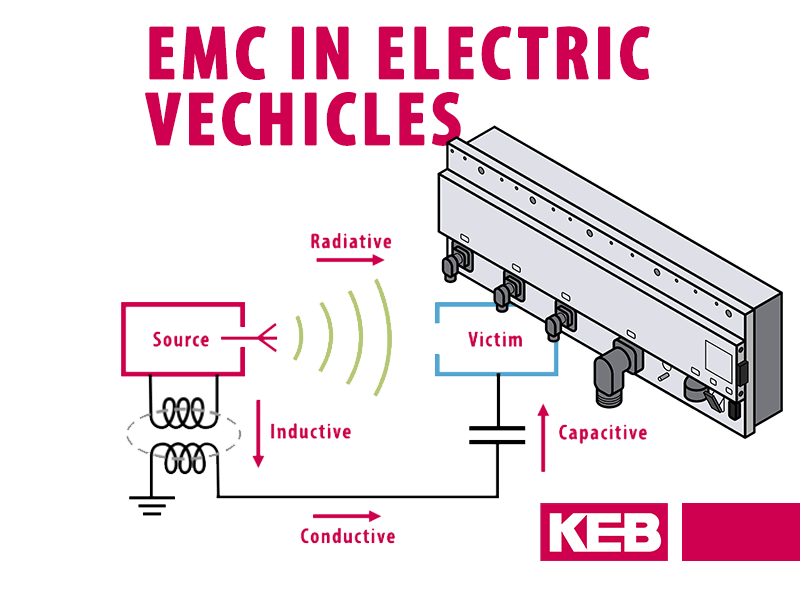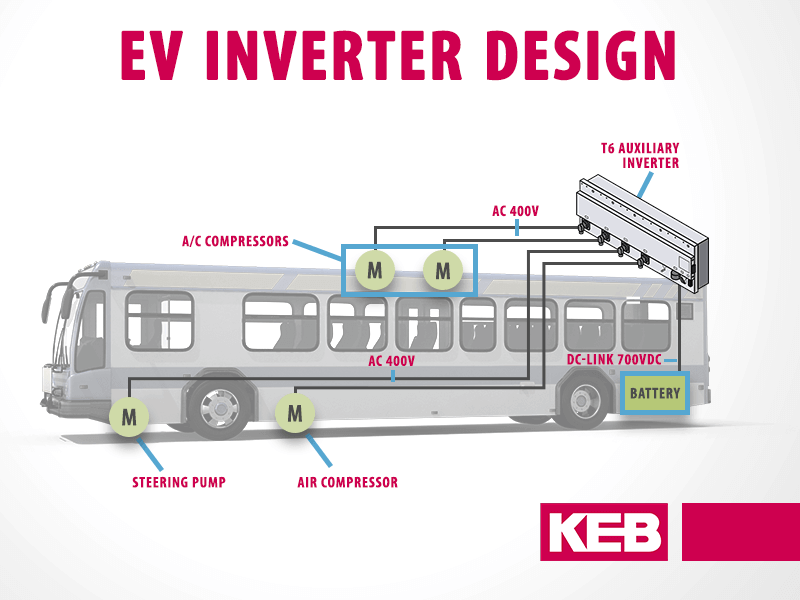Auxiliary Inverters for Electric Municipal Vehicles
The electrification of city transit and school buses continues to grow rapidly! This creates a lot of positive press for municipalities, providing further support for electric vehicle applications. This success in EV advancement is paving the way for the next round of viable municipal vehicle applications, particularly waste trucks and street sweepers. Even if the powertrain remains a combustion engine, there is the opportunity to electrify the auxiliary pumps, compressors, and condensers with electric motors and inverters as part of a hybrid design.
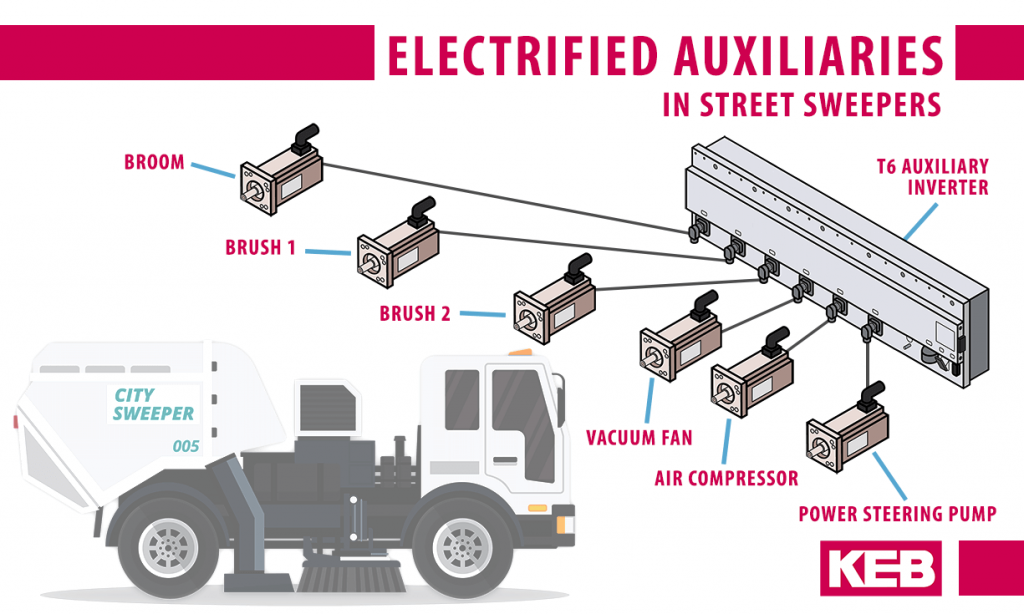
Street Sweepers and Waste trucks
Waste and recycling trucks are a good candidate as electric municipal vehicles due to regenerative braking from frequent stops. For example, street sweepers, typically have a set route where charging stops can be planned. What differentiates waste trucks and sweepers from vehicles like buses is that they do more than just drive around, they also do work.
The additional challenge of electrifying these municipal vehicles is the extra auxiliary components doing work added on to the base vehicle. The typical auxiliaries in the base vehicle are the steering pump, air compressor, and optionally the air conditioning condenser. Each of these electric motors requires its own control and as more auxiliaries are added to municipal vehicle applications to support other functions, there is an increased importance for auxiliary control system design considerations.
What differentiates waste trucks and sweepers from buses is that they do more than just drive around, they also do work.
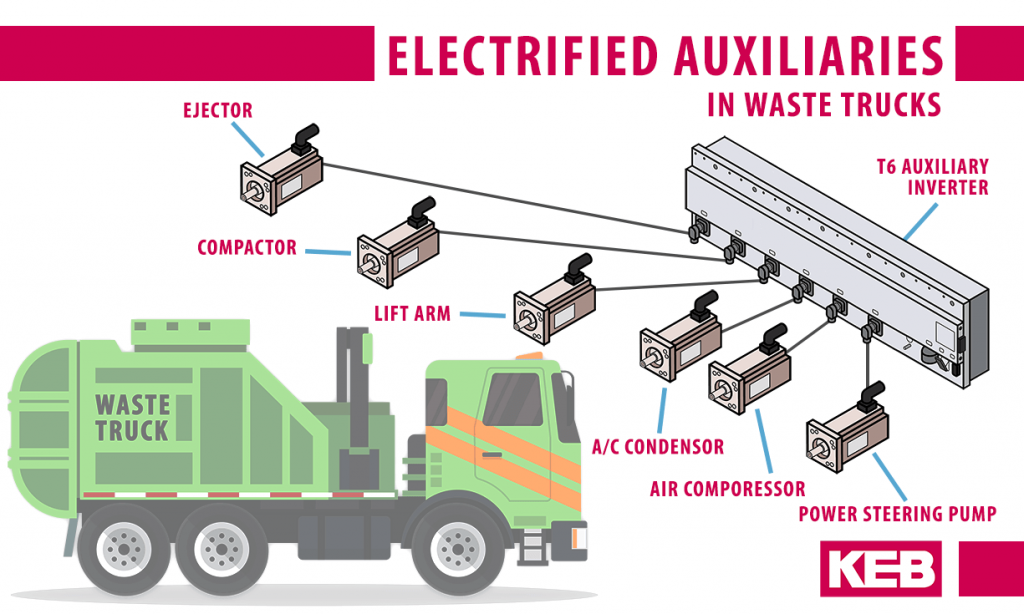
What additional auxiliaries can be electrified?
For both waste truck and sweeper applications, there are a variety of vehicle types so the number of added electric auxiliaries depends on system design options.
For waste and recycling trucks, one design option is to replace the transmission-driven PTO powering the hydraulic system with an electric motor. A second option would be to replace the hydraulic system with electric motors for the pickup arm, compactor, and ejector.
For sweepers, the electrified auxiliaries can include the vacuum fan and pumps for the hydraulic motors operating the brushes and broom. A second option would be to replace the hydraulic motors with electric motors.
What are the benefits of electrifying auxiliaries?
Less weight and hydraulic fluid
In both applications, there is the opportunity to replace hazardous hydraulic oil with an environmentally-friendly electric solution. This additionally eliminates the weight of the large hydraulic fluid reservoir and reduces the power draw from the battery or engine powering the hydraulic system.
Speed, torque and positioning benefits
A second benefit is that inverters can provide speed, torque and position control of motors to optimally control all of these auxiliaries based on their function.
For example, an inverter monitoring the torque of a waste truck auger can detect a jam and automatically reverse speed to clear the jam. Advanced inverter sensorless control algorithms utilizing a model of the learned motor characteristics not only provide precise closed-loop performance without encoder feedback, but operate motors with power efficiency by adjusting current and voltage output based on actual load conditions (as opposed to on/off control).
What are inverter considerations for electrification options?
What is unique with the waste truck and sweeper applications is the possible number of electrified auxiliaries, which can range from 2 – 8 motors. Likewise, the power requirements can range from 3kW – 10kW+. A design that pieces everything together can pose significant development challenges and long-term operational reliability risks. On the other hand, designing with a ‘system’ viewpoint ensures an efficient design that can easily be applied or scaled to multiple applications in addition to providing excellent operational performance. Below are some key considerations when selecting auxiliary inverters for these applications:
Multi-Axis Inverter: Scalable and Modular Design
At the end of the day, this undoubtedly should be the #1 consideration…especially as the number of electrified auxiliaries increase.
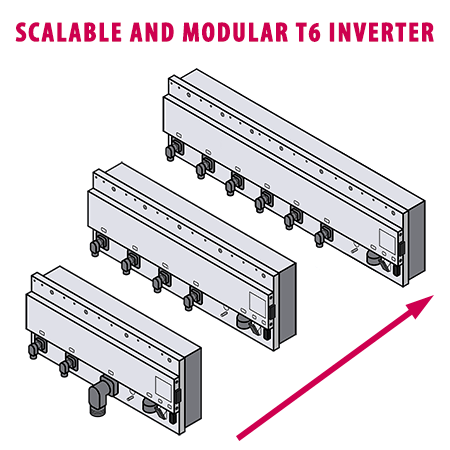
A Multi-axis Solution
A multi-axis solution has independently controlled inverter output stages for each auxiliary motor all contained in a single housing with one high voltage DC input supply to the system, one set of cooling connections (preferred is a IP6k9k/IP67 housing with liquid cooling), and one set of control connections.
- This allows optimal motor control and efficient operation for each motor compared to one large inverter supplying multiple auxiliary motors through a junction box of on/off switching contacts.
- This eliminates the cost and complexity of redundant parallel power, cooling, and control connections of distributed stand-alone inverters for each auxiliary.
A Scalable Solution
A scalable solution maintains the same multi-axis system architecture as additional inverter outputs are added to a unit.
- As inverter outputs are added, the marginal cost of each additional output will decrease, making a scalable multi-axis solution increasingly cost-efficient.
- Implementing additional auxiliaries is simplified with a consistent development approach.
A Modular Solution
A modular solution allows multiple power options for each inverter output stage.
- Offers full flexibility to mix and match power ratings for each inverter output independently
- Allows optimal sizing for each auxiliary based on rated motor data
- Motor cable gauge sizing can be optimized for each auxiliary motor
EMC Design and EMI Filtering
With ever more electronics being utilized in electric vehicles, electromagnetic compatibility (EMC) is critical. EMC design ensures electrical devices do not negatively affect the operation of each other by both containing and protecting against radiated and conducted electromagnetic interference (EMI).
Failure to properly control EMI can result in vehicle CAN communication disruptions, devices not operating properly, and even potential damage to devices from power or voltage spikes. Auxiliary inverters with integrated DC chokes and EMC type standard approvals such as ECE R10 (E1) and CISPR 25 are two important considerations to keep in mind to ensure reliable operation within the electrical environment.
Sensorless Motor Control
If one of the purposes of electrifying auxiliaries is to increase efficiency, then an inverter with sensorless motor control is important. Compared with open-loop volts/hertz operation, sensorless control provides more efficient operation with less motor losses as well as a dynamic response to loading conditions which manages power consumption.
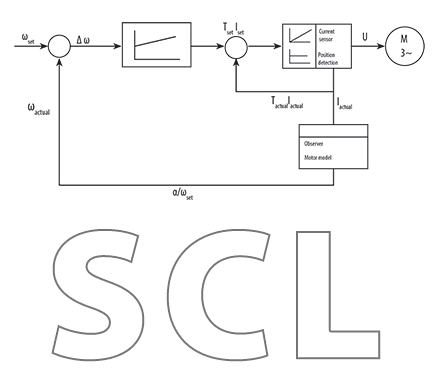
Sensorless control can also be used with permanent magnet motors, which are more efficient than induction motors, and additionally, eliminate the need for a motor encoder. In fact, sensorless motor control should perform better than closed-loop operation since it uses the motor characteristics to operate the motor. In this regard, one thing to consider in an auxiliary inverter is the availability of a built-in learn function for determining the motor characteristics.
Since the motor data needed for sensorless control (resistances, inductances, EMF constant) is typically not listed on the motor nameplate, an easy-to-use learn function will take the guesswork out of working with different motors and provide a quick start-up between the start and finish.
KEB T6 Auxiliary Inverter
Given the large number of auxiliaries that can potentially be electrified on electric or hybrid waste truck and sweeper applications and the wide variety of each vehicle type, the KEB T6 Auxiliary Inverter provides a highly flexible and competent solution.
Ideal for Commercial Vehicles
The T6 is a multi-axis inverter specifically designed for commercial vehicle applications which can be scaled from 1 to 6 inverter outputs in a single system housing, has three modular power options (7.5 kW, 15 kW, 30 kW) for each inverter output, and integrated DC choke filtering with ECE R10 and CISPR type standard approvals for EMC.
Other T6 features
From an operational standpoint, the T6 can sensorlessly control induction, permanent magnet (surface mount and internal), and switch reluctance motors and has a motor learn function for automatic characterization of the motor. In addition, the T6 programming environment includes startup wizards which can be used to start from default to spinning the motor in only a matter of minutes.
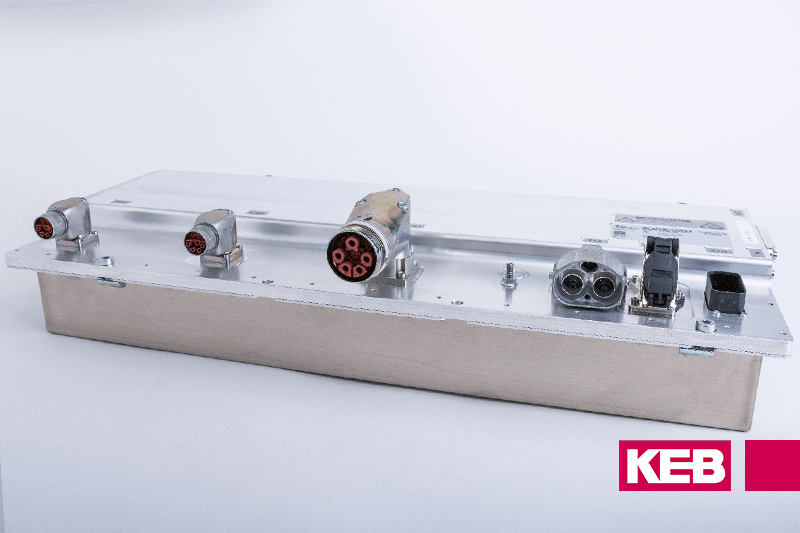
Conclusion
For municipal waste or recycling trucks and street sweepers, there is a wide variety of vehicle types and electrification of these vehicles can include 2 – 8 auxiliaries with a range of power ratings and potentially various motor types. Therefore, it is important to select a solution that is flexible, reliable, and efficient. A multi-axis auxiliary inverter that is scalable and modular, includes EMI filtering, and has sensorless motor control would be the optimal solution for these applications.
Let's Work Together
Connect with us today to learn more about our industrial automation solutions—and how to commission them for your application.
